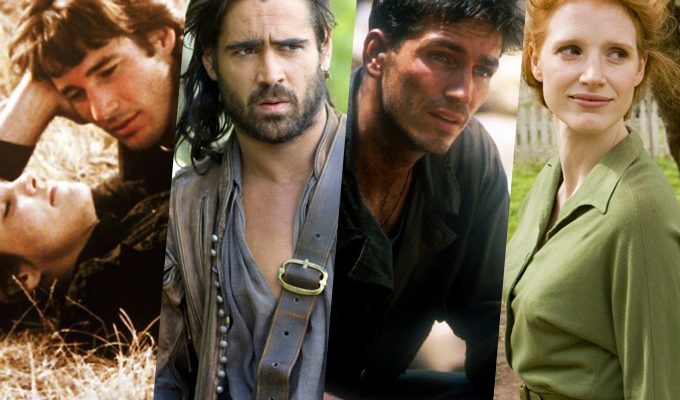This week, after an absurdly long delay following its premiere at the 2015 Berlin International Film Festival, Terrence Malick‘s “Knight of Cups” sighs, whispers and twirls its way into theaters. Love it, loathe it, or end up somewhere in between (our review), there is no doubt that, like every Malick movie that has come before, it is the Malickiest to date. It has as astonishing cast: Christian Bale, Natalie Portman, Cate Blanchett, Brian Dennehy, Wes Bentley, Imogen Poots, Teresa Palmer, Freida Pinto, Antonio Banderas, Isabel Lucas, Kevin Corrigan, Michael Wincott, Armin Mueller-Stahl, Clifton Collins Jr., Cherry Jones, Nick Offerman, and so on and so on — wait, is that Dan Harmon?
READ MORE: The 15 Best Shots In Terrence Malick’s Movies
In a world of colossal star egos, where A-list careers are defined by towering awards-bait roles, it’s amazing that Malick gets even Z-listers to show up when the standard punchline is “Congratulations! You’ve been cast in a Terrence Malick outtake!” (You can read about Actors Cut From Malick Films here). No actor has ever won an Oscar for a Malick film (in fact, the only Oscar for any of his films was for Best Cinematography on “Days of Heaven“). Yet show up they do, in droves, as though it’s some sort of compulsory rite of passage. Some have the “quasi-religious” experience Cate Blanchett describes, other have a more surreal encounter with the Malickverse, such as the one Thomas Lennon outlines in this hilarious account of his day on the “Knight of Cups” set. But all of them seem to jump at the chance, despite manifold stories of disappointment and pique when the premiere rolls around and the various characters’ screen times are finally revealed.
READ MORE: Terrence Malick Wanted John Travolta & 15 Things You Didn’t Know About ‘Days Of Heaven’
So how many of them really get to give a performance? It’s a fascinating prism through which to consider Malick’s films, which almost seem (recently anyhow) to set themselves apart from such prosaic concerns as “acting” or “creating character.” After all, if we were to be wholly honest about the Best Performances in Malick films, and were to be influenced by the elements that Malick seems most invested in, the top ten might look like this:
10. Dinosaur no. 2 — “The Tree Of Life”
9. The Horizon — “Badlands”
8. A Baby’s Foot — “The Tree of Life”
7. Long Grass — “The Thin Red Line”
6. The Tree Ben Affleck Is Afraid Malick Is More Interested In Than Him — “To The Wonder”
5. A Burning House — “Badlands,” “Days of Heaven”
4. Mickey Rourke’s Shadow On That One Fern — “The Thin Red Line”
3. Another Tree, Not The One Ben Affleck Was Talking About — “The Tree of Life”
2. Peanut Shell no 4301 playing Locust #6277 — “Days of Heaven”
1. This Upstaging Asshole Osprey — “The New World”
But Malick’s well-documented preference for landscape and nature over people aside, some appearances by human men and women do actually stand out. Whether because they punch through the diaphanous floatiness of his style or because they seem peculiarly attuned to it, there are performances in Malick films that are extraordinary. Here are our favorite 15.
 Olga Kurylenko as Marina in “To The Wonder” (2012)
Olga Kurylenko as Marina in “To The Wonder” (2012)
By rights, “To The Wonder” should have been a bigger moment for Kurylenko than it was: here was the onetime Bond Girl being given a central role in a hugely anticipated auteur’s follow-up to his previous Best Picture nominee, a part that on paper certainly had all the shades of light and dark that would make it a thespian’s dream. But with his usual lack of regard for anything so petty as building the career of his stars, Malick shot many of those more actorly scenes of hysteria, violence and argument, only to leave them on the cutting room floor and present a much more sedate and twirly picture of his leading lady. But Kurylenko is still very impressive in the film —maybe more so for the restraint imposed on her performance in the edit. She is as luminous as first love in those golden remembered moments of happiness, and as sullen as a candle snuffed out later. And if we’re never quite inside Marina, looking out —in what has widely been interpreted as a kind of cinematic apology to his second wife, Malick’s film orbits around her rather than coming from her— it does give us a 360 degree impression of this naively hopeful woman and the colossal pain of having invested too much in a love that dies.

